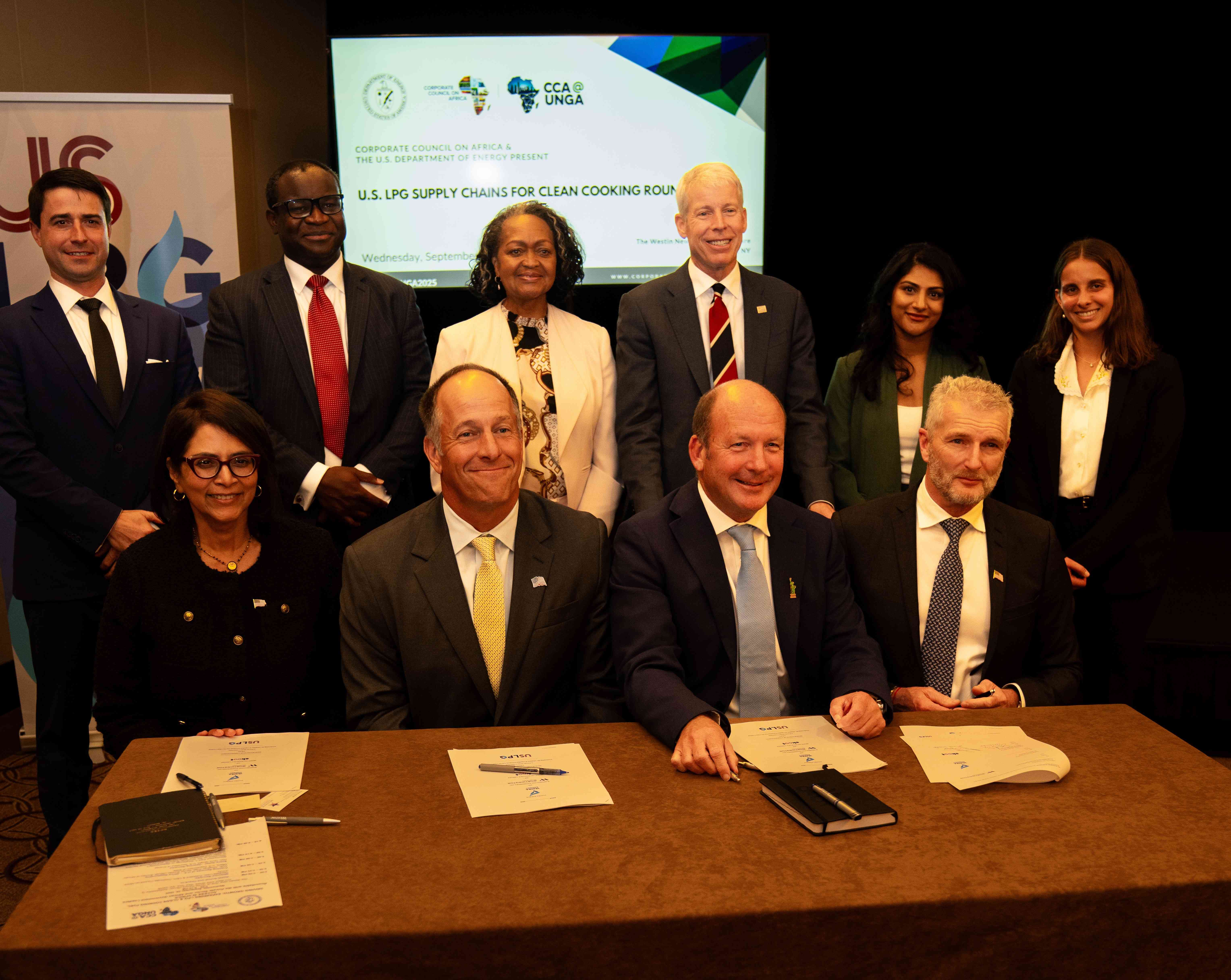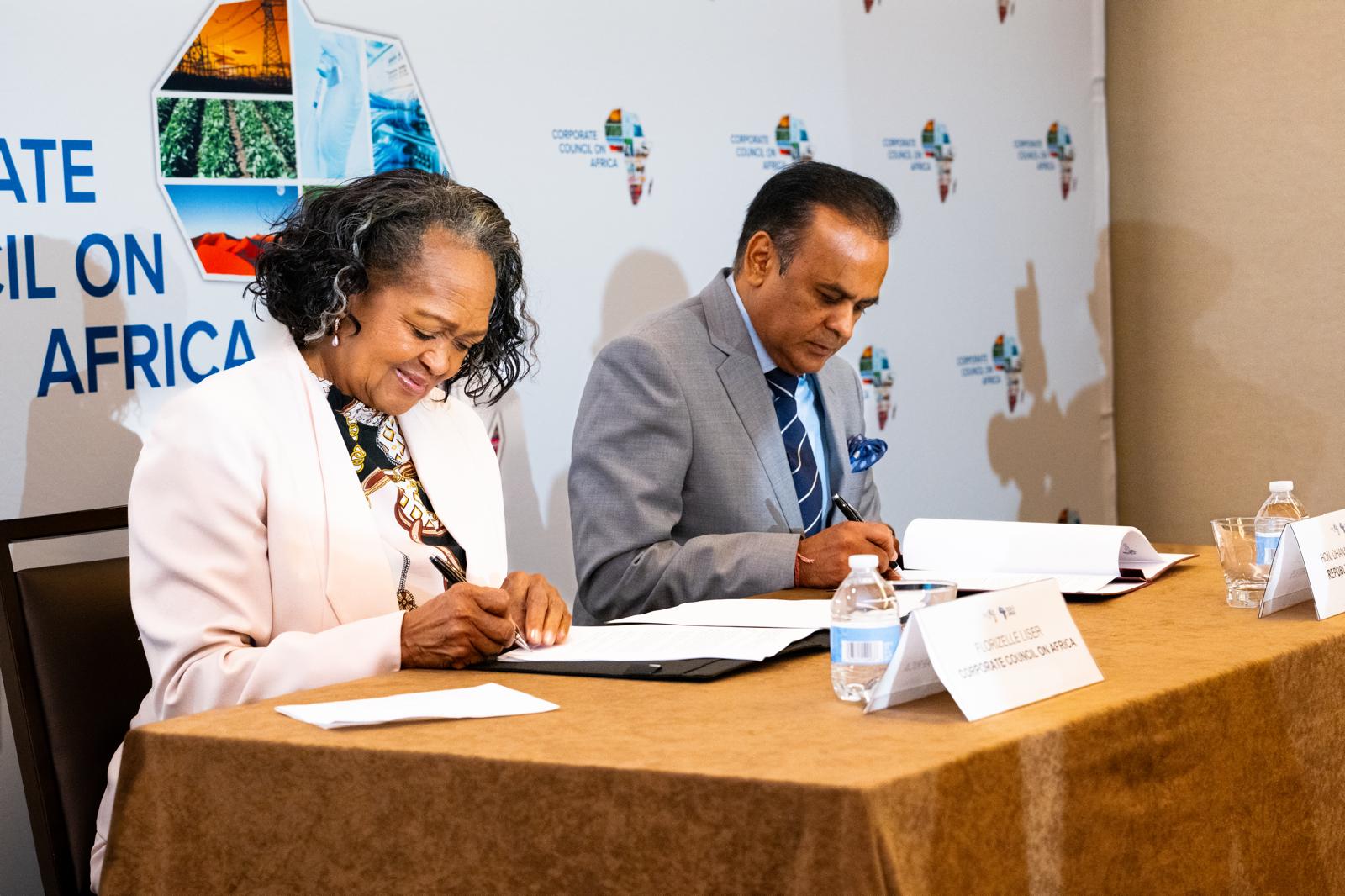Africa's 2019 Economic Outlook

Photo - Dr. Albert G. Zeufack, Chief Economist for Africa, World Bank Group addresses delegatesOn Friday, February 1st, Corporate Council on Africa (CCA) hosted Dr. Albert Zeufack, Chief Economist, Africa Region at the World Bank. In his introductory remarks, Dr. Zeufack indicated that Africa grew 2.7% in 2018, just above its population growth rate. This average masks the fact that the three largest economies – South Africa, Nigeria and Angola – all grew less than 3%, while 11 countries have grown more than 5% from 2015-2018. Africa is expected to experience 3.4% growth in 2019. He identified the three major global factors influencing Africa’s economic growth as the moderation in global economic growth, rising trade tensions resulting in heightened policy uncertainty and a sharper tightening of borrowing costs. He also identified commodity prices and slow-paced economic recovery as other factors negatively affecting the growth trajectory on the continent.Dr. Zeufack acknowledged that though macroeconomic outcomes are improving, inflation pressure remains high across the region, with some countries even recording double digits. This pressure is reflected in high food price inflation, currency depreciation, and the monetization of large fiscal deficits.He invited investors to keep an eye on currencies which have weakened due to tighter global financing conditions and rising debt servicing costs. He applauded the reversal in external balances which has improved for large oil exporters, though the deficit remains high for several non-resource exporting countries due to high levels of fuel and capital goods imports related to public infrastructure projects.Dr. Zeufack stressed the importance of a long-term shift in Africa’s trade partners away from the more traditional European and U.S. markets towards India and China. He noted that rising global protectionism and trade tensions present challenges for some exporters of primary products, particularly as these tensions reduce global prices for some of these goods. The imposition of tariffs in some markets has caused some trade distortion, which has created opportunities for some African exporters.Dr. Zeufack also highlighted the importance of Africa increasing its inter-regional trade from the current 16-17%, ideally up to the world’s average of 50%. Doing so would increase African GDP and create significant numbers of jobs. He applauded the efforts to implement the African Continental Free Trade Agreement, which he said should help facilitate greater regional trade and investment in value chains.Dr. Zeufack also explained a World Bank benchmark, the Country Policy and Institutional Assessment (CPIA)*, which is released in an annual report that describes the progress all IDA-eligible countries are making on strengthening the quality of their policy and institutions based on 16 indicators. He stressed the direct correlation between the CPIA score and economic growth.Dr. Zeufack noted that African countries are increasingly diverging into five groups. One group consists of four established high-growth countries; one consists of 11 countries that have managed growth over 5% for the last three years, but could find some of their progress is reversible. Another group is stuck in the middle, while another group (including the three largest economies) is losing steam. The last group is falling behind, and is at risk of slipping. He concluded his presentation by noting that the business climate in Africa is improving faster than any other region in the world as measured by the World Bank’s Ease of Doing Business Index. Dr. Zeufack stressed the importance of African countries continuing to attract more investment, particularly in sectors like the digital economy.*CPIA scores reflect the quality of a country’s policy and institutional framework across 16 dimensions, grouped into four clusters: economic management, structural policies, policies for social inclusion and equity, and public sector management and institutions also referred to as the governance cluster.



